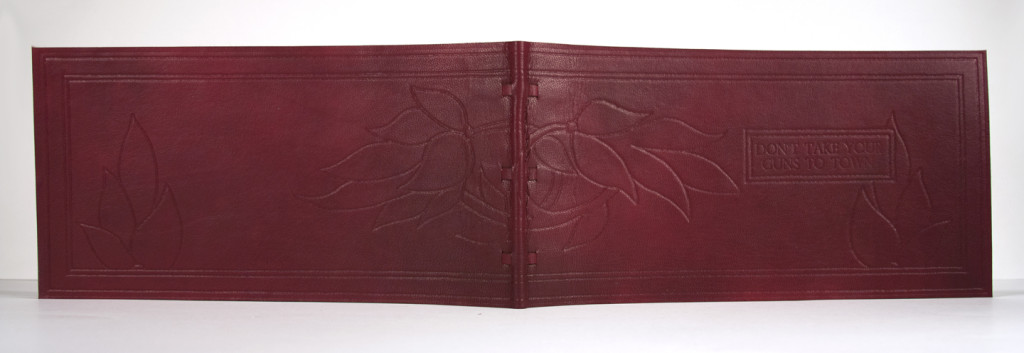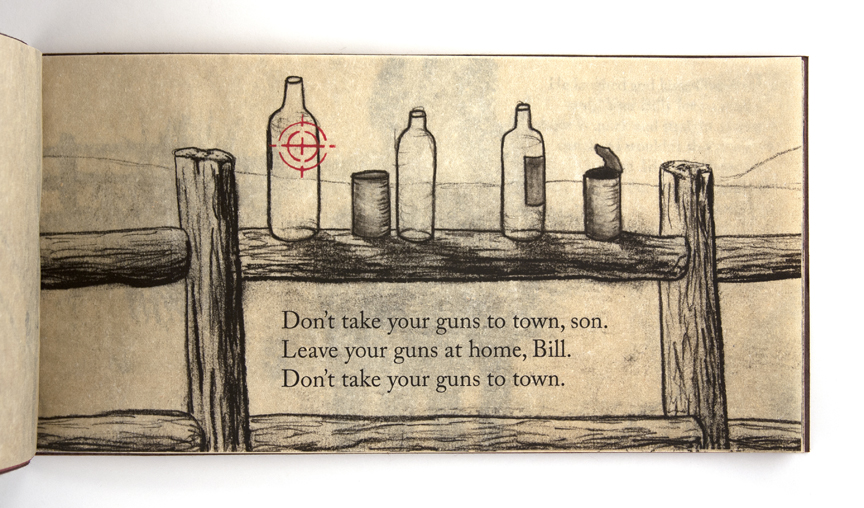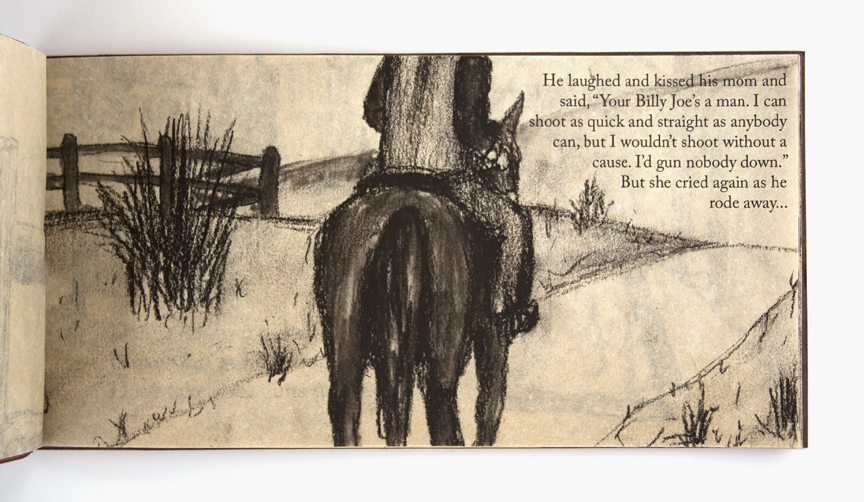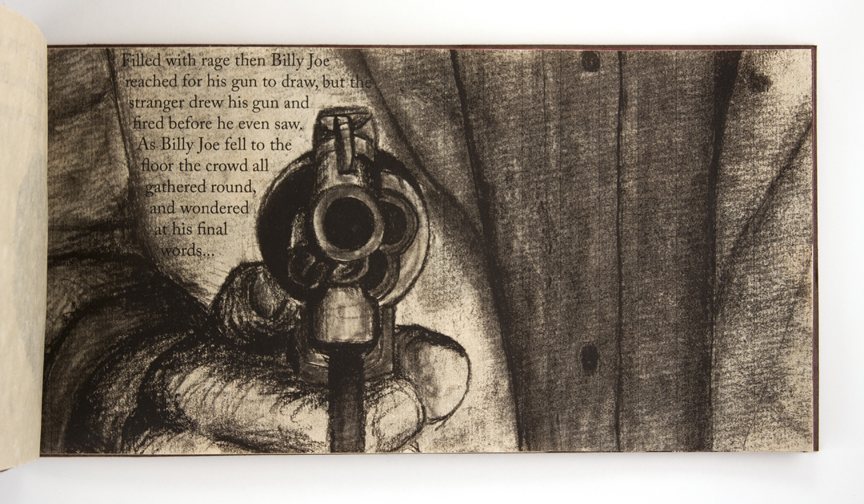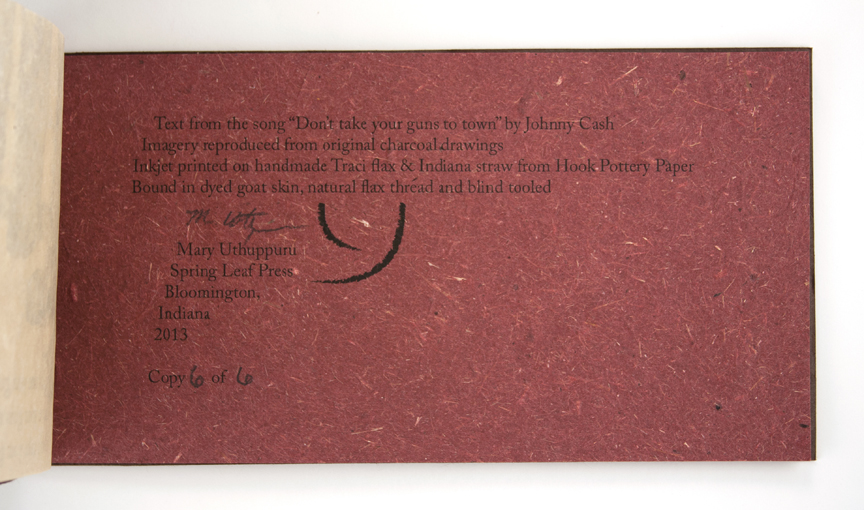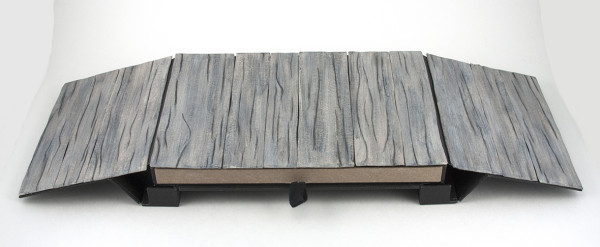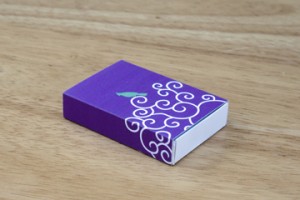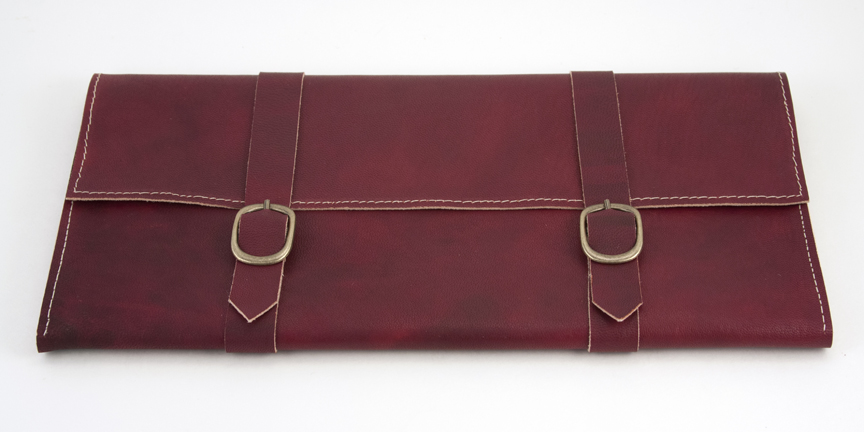 Catalyzed by a familiar starting point, this book project was begun as a planned assignment between myself and Kristin of Space Paste Press. After the success of our 2011 Intellectual Collaboration projects that took one month from conception to completion, we wanted to try the same idea with a longer time frame. The goal was to end up with finished pieces as opposed to the one month book sketches. The end result was something that should be “exhibit ready” so that the time spent on these projects would hopefully yield even more benefit than the prior learning experiences. With all this in mind, we met in our virtual conference room and the parameters were set: social issue and popular song. These things go hand in hand depending on what music you listen to and after both projects were completed, I think we each came out with a wonderful end result.
Catalyzed by a familiar starting point, this book project was begun as a planned assignment between myself and Kristin of Space Paste Press. After the success of our 2011 Intellectual Collaboration projects that took one month from conception to completion, we wanted to try the same idea with a longer time frame. The goal was to end up with finished pieces as opposed to the one month book sketches. The end result was something that should be “exhibit ready” so that the time spent on these projects would hopefully yield even more benefit than the prior learning experiences. With all this in mind, we met in our virtual conference room and the parameters were set: social issue and popular song. These things go hand in hand depending on what music you listen to and after both projects were completed, I think we each came out with a wonderful end result.
See Kristin’s finished piece HERE.
When we set out to do this project, it was early 2013 and gun violence was in the news everyday. It seemed like there was a new unimaginable tragedy with every headline and I couldn’t get them off my mind. I was left with a lump in my throat and a slew of questions about human nature that I sought answers to. What drives us to pick up a gun? What urges us to use one? Why guns in the first place? Is owning a gun worth the potential hazards? These questions stimulated research into fear, an emotion that I think is the source of most violence and what makes us feel a need for weapons. Looking to contemporary media and literature, I explored the debate for and against gun control. Before long, I turned to music and found myself connecting with Johnny Cash’s Don’t take your guns to town. The song addresses a scenario that is still relevant today, and while it doesn’t answer all of my questions that still persist, it is a lens through which I can see another viewpoint. I especially liked this song as a choice because of its popularity and how each human aspect is kept intact. While people are inherently good, a gun is still a gun. The boy in the song could be anyone in many scenarios today.
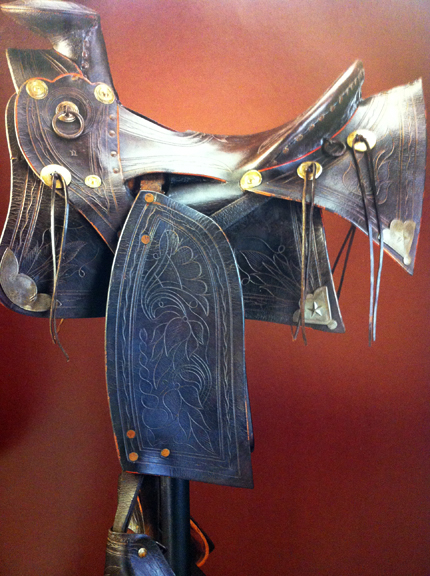 Finding a group of materials to fit my theme was fairly easy. Cash’s song references the olden days since it features a cowboy. Immediately saddles came to mind as well as a dry, gritty, and tough environment. Paper for the text was going to be my most important decision. I wanted a crunchy paper that suggested age – something similar to parchment. This paper also needed to be able to accept printer ink since I decided to illustrate the text with charcoal drawings. Those drawings would be scanned into my computer and printed black to preserve the charcoal quality but allow me to reproduce the content. The paper I finally found was made by Andrea Peterson of Hook Pottery Paper – at least most of it was. The beautiful Natural Flax paper the illustrations were printed on (with a gentle translucency), was made by Andrea, and the perfectly rustic, cranberry colored, grass paper was made by me under her guidance. During my first residency with Andrea in her studio, I made the paper from start (cutting down the grass) to finish (pulling the sheets from the dryer).
Finding a group of materials to fit my theme was fairly easy. Cash’s song references the olden days since it features a cowboy. Immediately saddles came to mind as well as a dry, gritty, and tough environment. Paper for the text was going to be my most important decision. I wanted a crunchy paper that suggested age – something similar to parchment. This paper also needed to be able to accept printer ink since I decided to illustrate the text with charcoal drawings. Those drawings would be scanned into my computer and printed black to preserve the charcoal quality but allow me to reproduce the content. The paper I finally found was made by Andrea Peterson of Hook Pottery Paper – at least most of it was. The beautiful Natural Flax paper the illustrations were printed on (with a gentle translucency), was made by Andrea, and the perfectly rustic, cranberry colored, grass paper was made by me under her guidance. During my first residency with Andrea in her studio, I made the paper from start (cutting down the grass) to finish (pulling the sheets from the dryer).
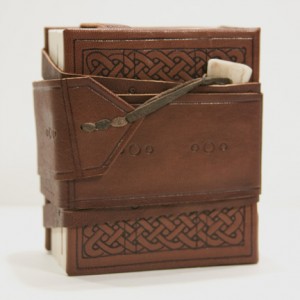
The natural choice for the cover was of course leather. Those old west, cowboy saddles were all I could think of and they immediately captured the nature of the environment. My trouble was not what to do but how to do it. A blind tooled design would be perfect. I learned a version of this method with Julia Miller back in 2011 at PBI. That book was much smaller than this project though so I needed to figure out a way to create the design on a larger scale AND be able to duplicate it. After many trials with [what I am certain are] unconventional solutions, I settled on this method. I created the design on a piece of mat board in pencil. Then, elementary school style (remember the yarn), I glued hemp cord to the pencil lines and allowed that to dry. Since I was using PVA – and not Elmer’s – I was left with a fairly strong surface that could be pressed into wet leather repeatedly.
I did a to scale test with the dyed leather to see if this grand idea would work which was tested only on a small scale before. I only have a small nipping press so this piece of leather (5.5″ x 22″) had to be pressed in two sessions. The leather was first wet down and then laid on top of the raised design with plastic wrap in between. (Prior testing resulted in the hemp cord sticking to the leather). This result was alright, but it took ages and I needed decided to make six copies. Without a better solution, I put the project aside. If time allows it, sometimes it is better to walk away for a little bit. [For this and a few other reasons, this project exceeded the 3 month allotment. It was decided that it was worth taking the extra time.]
It was picked back up after two events: the arrival of a new studio addition last year and a very helpful conversation with Jeff Altpeter, of North Bennet Street School at PBI in 2013 (these conversations are what makes PBI so great!). The new press would allow me to make the impression over the whole piece of leather all at once. My conversation with Jeff brought the idea of saturating the leather with paste, backing it with Moriki tissue, and THEN running it through my press (while wet) in its silly sandwich. Process photos below.
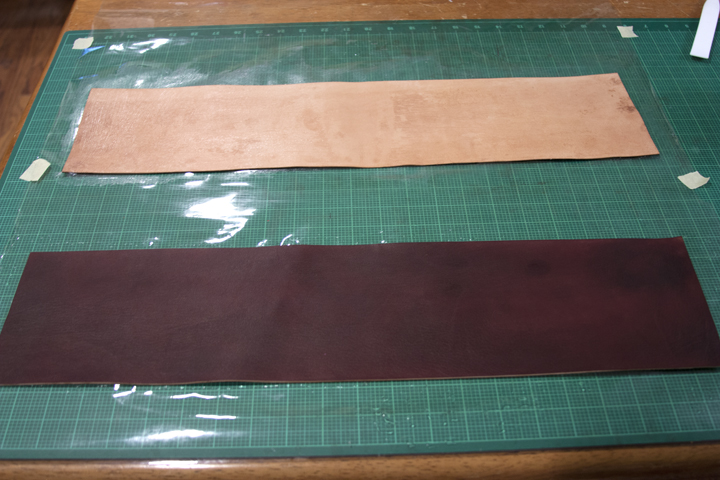
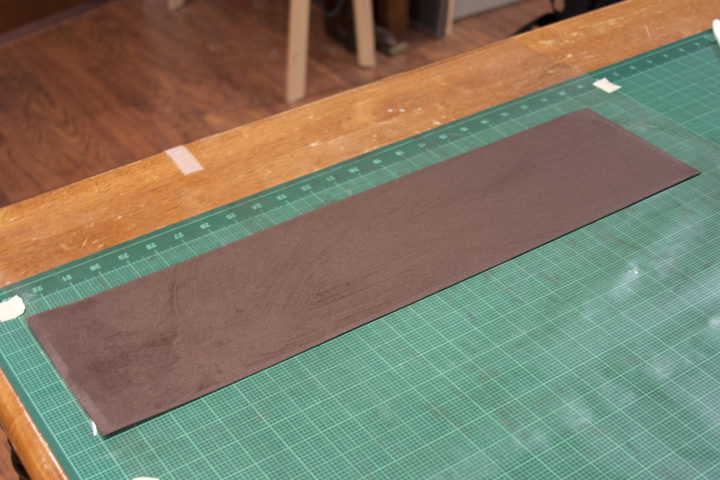
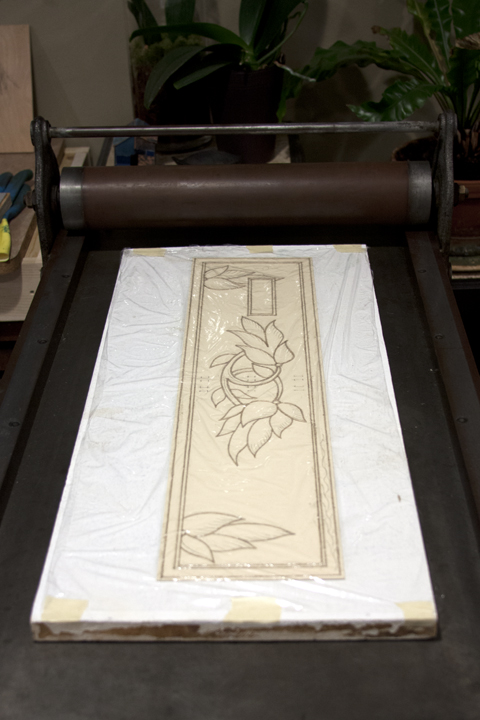
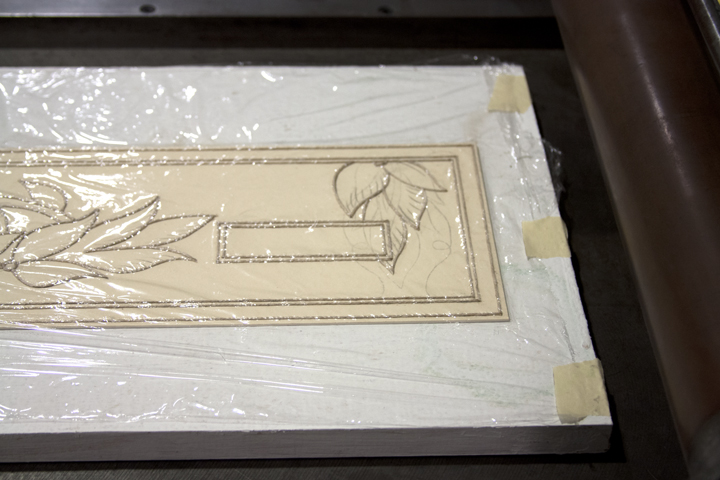 Â
 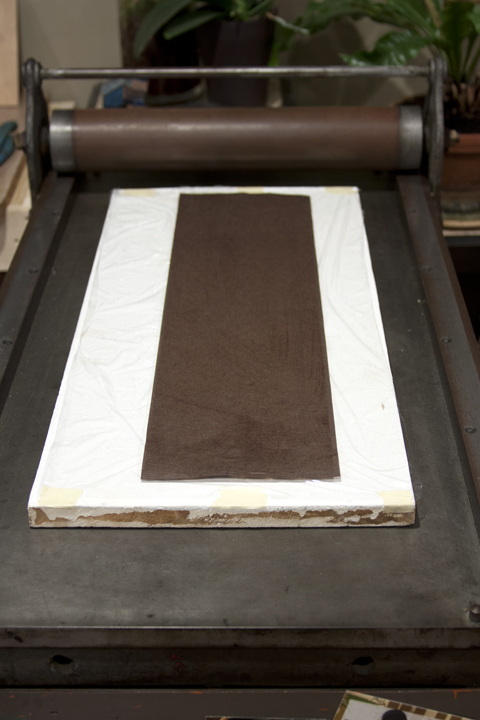
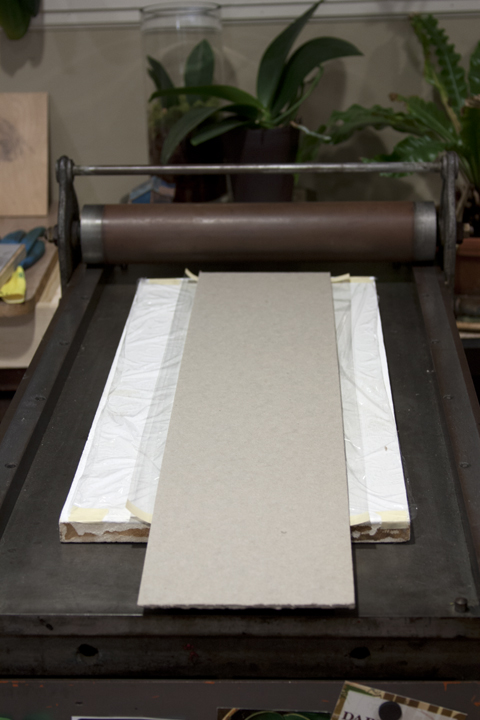
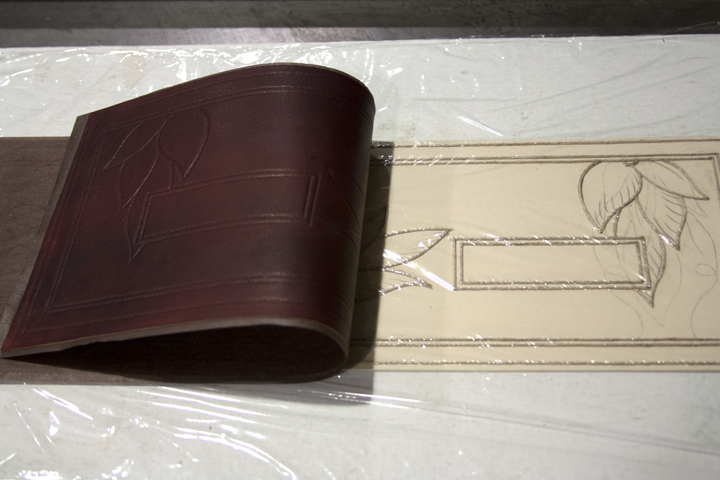 So like always, with a little help from friends and colleagues, I found my way through this book project and I am really happy with the result. It will be a part of the 23 Sandy Gallery where it will be part of the Book Power Redux show. It promises to be an excellent selection of work that features social issues at its center. Don’t miss it!
So like always, with a little help from friends and colleagues, I found my way through this book project and I am really happy with the result. It will be a part of the 23 Sandy Gallery where it will be part of the Book Power Redux show. It promises to be an excellent selection of work that features social issues at its center. Don’t miss it!
Schedule:
MAY 30, 2014 – Exhibition Opens at 23 Sandy Gallery
MAY 31, 2014 – Artists Reception at 23 Sandy Gallery, 4-6:00 p.m.
JULY 26, 2014 – Exhibition Closes at 23 Sandy
MID-AUGUST, 2014 – Final Dates TBD. Exhibition Opens at the University of Puget sound
SEPTEMBER 25-27, 2014 – Race & Pedagogy National Conference at the University of Puget Sound
OCTOBER 15, 2014 – Exhibition closes at University of Puget Sound
